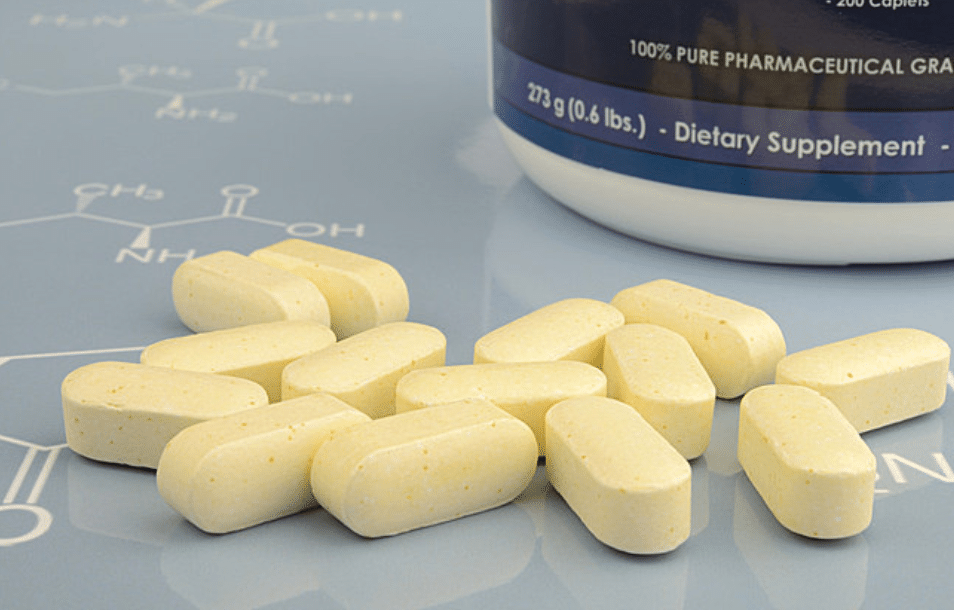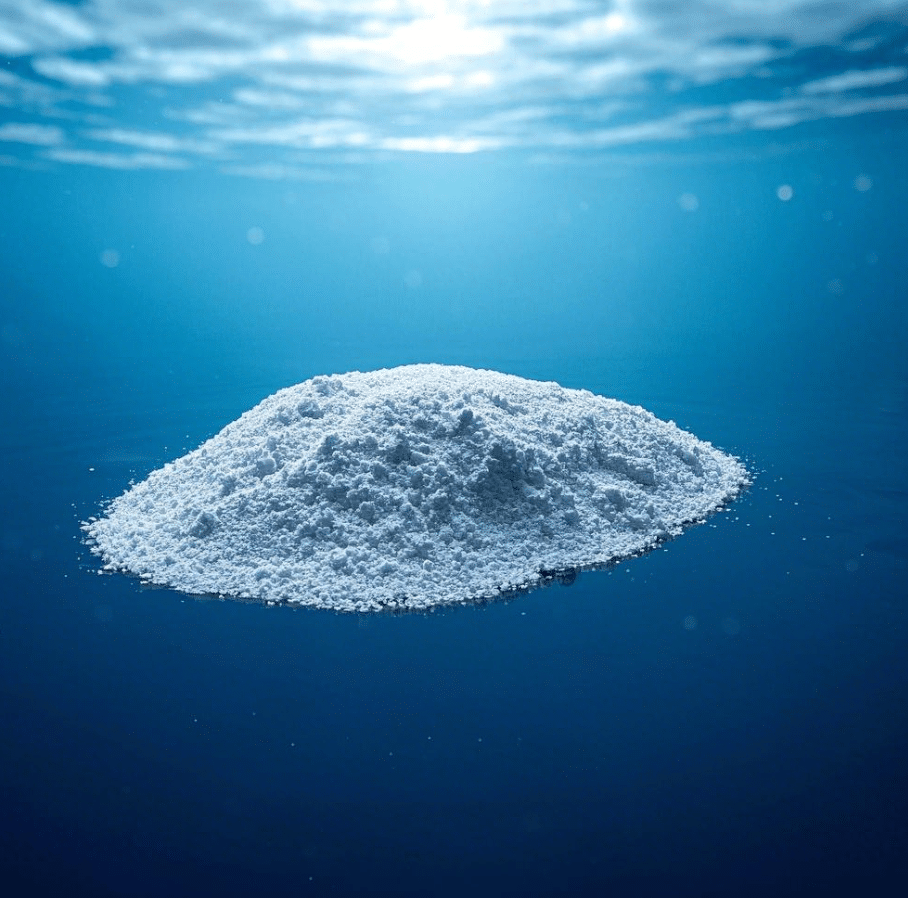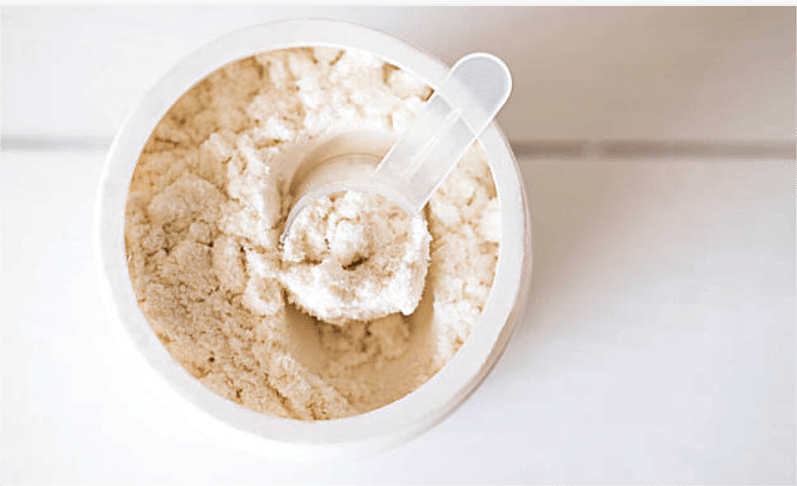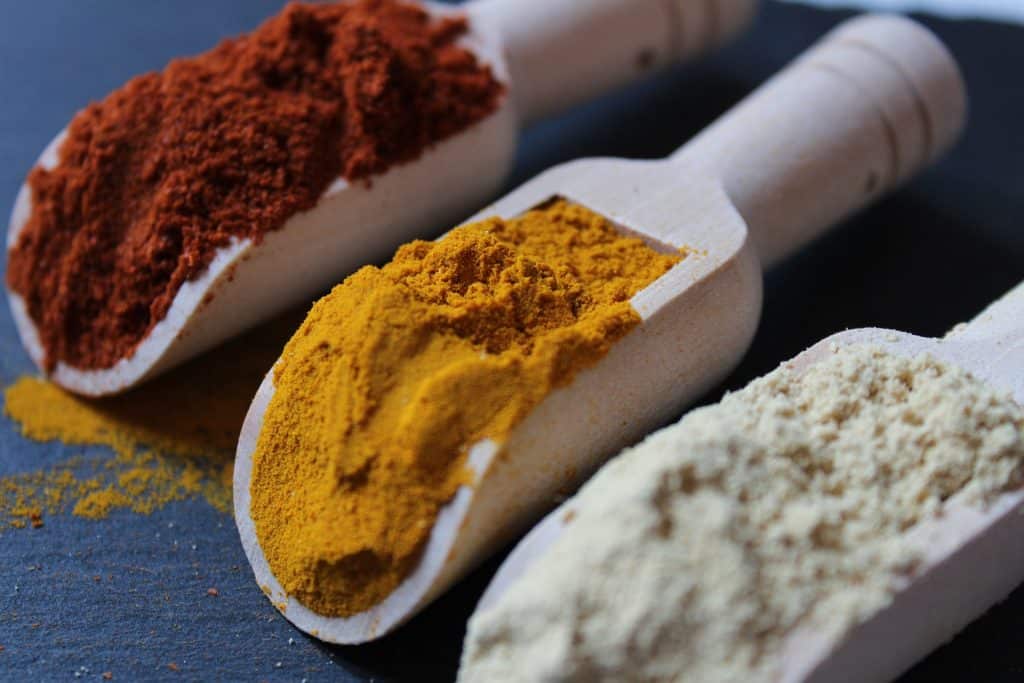Magnesium Amino Acid Chelate: The Ultimate Guide for Health Product Manufacturers
Are you tired of sifting through endless technical jargon trying to understand what makes Magnesium Amino Acid Chelate so special? Trust me, I’ve been there – drowning in scientific papers while trying to figure out if this ingredient is worth the hype. Spoiler alert: it totally is, and I’m about to break down exactly why your product formulation team needs to be all over this game-changing mineral form.
In the ever-evolving world of nutritional supplements, Magnesium Amino Acid Chelate has emerged as the main character in the magnesium story. But what exactly makes this form of magnesium the moment? And how can your brand leverage its unique properties to create products that actually deliver on their promises?
The Basics: What Even is Magnesium Amino Acid Chelate?
Let’s start with the fundamentals – because you can’t formulate with what you don’t understand, right?
Magnesium Amino Acid Chelate refers to magnesium that’s been “chelated” or bound to amino acids. This isn’t just some random chemical mash-up; it’s a carefully designed form where the magnesium is literally embraced by amino acids in a ring-like structure. Think of it as magnesium getting a protective hug from amino acids that helps it survive the harsh journey through your digestive system.
Key Identification Details
For all my spec sheet enthusiasts (I see you), here’s the nitty-gritty:
- Common Names: Magnesium bisglycinate, magnesium glycinate, amino acid chelated magnesium
- CAS Numbers: Varies by specific chelate (Magnesium bisglycinate: 14783-68-7)
- Production Standards: USP, EP, FCC generally applied
- Physical Appearance: Fine white to off-white powder
- Taste Profile: Mild, significantly less bitter than magnesium oxide or citrate
- Production Solvents: Primarily water-based processes
- Common Specifications: 10-20% elemental magnesium content
- Typical Mesh Size: 80-120 mesh
- Import Tariffs: ~5.5% in US; 2-4% in EU (subject to change)
- HS Code: 2930.90.46 (for most magnesium chelates)
- Shelf Life: 2-3 years when properly stored
- Storage Requirements: Cool, dry place in sealed containers
- Standard Packaging: 25kg fiber drums or multi-layer kraft paper bags
Origin Story: Who Invented This Stuff?
Magnesium Amino Acid Chelate isn’t exactly new to the scene, though it’s definitely having its main character moment now. The concept of mineral chelation dates back to the 1950s when scientists first started investigating how metals interact with organic compounds in biological systems.
The commercial breakthrough came in the 1970s when researchers (notably Dr. H. DeWayne Ashmead and his team) discovered that binding minerals to amino acids dramatically improved their absorption in the human body. By the 1990s, specialized magnesium amino acid chelates had started gaining traction in the nutritional supplement world, but they remained relatively niche until the 2010s, when bioavailability became a major marketing focal point.
Fast forward to today, and magnesium as amino acid chelate has become the gold standard for premium magnesium supplementation. This isn’t just another wellness trend – it’s literally chemistry doing its thing to solve an absorption problem that’s plagued traditional magnesium supplements for decades.
Physical Properties: What Form Does It Take?
In the marketplace, Magnesium Amino Acid Chelate typically appears as:
- Powder Form: The most common for manufacturing applications, appearing as a fine white to off-white powder
- Granular Variants: Processed for improved flow properties in production environments
- Encapsulated Microspheres: Specialized forms for controlled release applications
- Pre-dissolved Liquid Concentrates: For ready-to-mix liquid applications
The powder form dominates the market, accounting for approximately 85% of all Magnesium Amino Acid Chelate used in supplement manufacturing. Its versatility allows incorporation into virtually any delivery system, from capsules and tablets to powdered drink mixes and gummies.
Production Ingredients: What Goes Into Making It?
The production of high-quality Magnesium Amino Acid Chelate involves several key components:
- Magnesium Source: Typically magnesium oxide or magnesium hydroxide
- Amino Acids: Primarily glycine, though lysine, taurine, or other amino acids may be used
- Chelating Agents: Sometimes additional compounds to facilitate the chelation process
- pH Adjusters: Ensure optimal conditions for chelation reactions
- Processing Aids: Various compounds to improve production efficiency
The specific ratio and quality of these components significantly impact the final product’s stability, bioavailability, and overall performance. This isn’t a situation where all suppliers are created equal – the nuances in manufacturing processes create substantial quality differences that directly affect your finished products.
Solubility: Will It Play Nice With Your Formula?
One of the most frequently asked questions about Magnesium Amino Acid Chelate concerns its solubility. Here’s the tea: it’s significantly more water-soluble than inorganic magnesium compounds (like magnesium oxide), but less soluble than magnesium citrate.
Most forms offer moderate water solubility – enough to work well in most liquid applications with proper formulation, but not so soluble that stability becomes an issue. The exact solubility depends on the specific amino acid used in the chelate, with magnesium bisglycinate typically offering better water dispersibility than some other chelated forms.
This balanced solubility profile makes Magnesium Amino Acid Chelate particularly versatile across different delivery systems, from traditional capsules to trendy functional beverages. If complete dissolution in cold water is essential for your application, you’ll want to work closely with your supplier on selecting the right grade or potentially using a combination of magnesium forms.
Market Applications: Where Can You Use It?
Magnesium Amino Acid Chelate has carved out space in numerous product categories:
- Stress Support Formulations: Leveraging magnesium’s role in nervous system function
- Sleep Enhancement Products: Often paired with ingredients like GABA or L-theanine
- Sports Nutrition: Recovery and cramping prevention formulations
- Bone Health Supplements: Combined with calcium, vitamin D, and vitamin K
- Cardiovascular Support: Heart health formulations
- Women’s Health Products: Particularly for PMS and hormonal support
- Cognitive Function Supplements: Brain health and focus formulations
The versatility of this ingredient makes it applicable across multiple consumer benefit areas, allowing brands to address diverse consumer needs with a single high-quality ingredient. No cap – this versatility is a major reason why formulators are increasingly selecting Magnesium Amino Acid Chelate over traditional forms.
Manufacturing Magic: How Is It Actually Made?
The production of Magnesium Amino Acid Chelate follows several established methods, with direct synthesis being the most common commercial approach:
- Direct Chemical Synthesis: Magnesium salts react with amino acids under controlled pH and temperature conditions
- Enzymatic Production: Specialized enzymatic processes facilitate the chelation
- Fermentation-Assisted Methods: Using microbial processes to create the metal-amino acid bonds
The most common industrial process involves carefully reacting magnesium compounds with glycine (or other amino acids) in a precisely controlled aqueous environment. The pH must be tightly managed throughout the reaction to ensure proper chelation. After the reaction completes, the mixture undergoes filtration, drying, and milling to create the final powdered product.
This isn’t backyard chemistry – producing high-quality Magnesium Amino Acid Chelate requires sophisticated equipment, exacting quality control, and specialized expertise. The difference between a true chelate and a simple mixture of magnesium and amino acids is substantial in terms of performance, though not always obvious from superficial analysis.
The Benefits: Why Should Your Customers Care?
Here’s where Magnesium Amino Acid Chelate really shines. The benefits are numerous and backed by increasing scientific evidence:
- Superior Absorption: 2-4 times better absorbed than magnesium oxide
- Reduced Gastrointestinal Distress: Significantly less likely to cause the laxative effect associated with other magnesium forms
- Better Cellular Utilization: More effectively delivered to tissues that need it
- Enhanced Nervous System Support: More efficiently crosses the blood-brain barrier
- Improved Musculoskeletal Benefits: Better uptake by muscle tissue
- Gentler on the Digestive System: Less reactive in the GI tract
These aren’t just marketing claims – they’re based on the fundamental chemistry of how chelated minerals interact with the human body. The amino acid “shield” protects the magnesium from binding with interfering substances in the digestive tract, allowing more of it to reach its intended destination.
Side Effect Profile: What’s the Downside?
No ingredient is perfect, and Magnesium Amino Acid Chelate does have some potential side effects, though they’re generally milder than other magnesium forms:
- Mild Digestive Discomfort: Possible but significantly less common than with other forms
- Headaches: Occasionally reported, particularly during initial supplementation
- Dizziness: Rare but reported in sensitive individuals
- Interaction with Certain Medications: May affect absorption of some antibiotics and medications
The good news? These side effects are typically mild and less common than with non-chelated forms of magnesium. The reduced GI impact is actually one of the major selling points for Magnesium Amino Acid Chelate over traditional forms. When used at recommended dosages, most consumers experience minimal to no side effects.
Bioavailability Magic: How Does It Work in the Body?
Here’s where the science gets particularly fascinating. Magnesium Amino Acid Chelate works differently from conventional magnesium supplements in several important ways:
- Intact Absorption: The chelated complex can be absorbed partially intact through amino acid transporters
- Protected Transport: The amino acid “shield” prevents magnesium from binding with interfering substances in the gut
- Reduced Competition: Less affected by dietary factors that normally inhibit mineral absorption
- Enhanced Cellular Delivery: The amino acid component may facilitate transport across cell membranes
This unique absorption mechanism leads to significantly higher bioavailability – typically 2-4 times that of magnesium oxide and notably better than citrate forms as well. The practical implication? Your customers get more functional magnesium from a lower dose, with reduced GI side effects.
How Long Until It Works? The Timeline Question
One of the most common questions consumers ask about any supplement is: “How long until I feel something?” For Magnesium Amino Acid Chelate, the answer varies by application:
- Acute Relaxation Effects: Some users report noticeable calming effects within 30-60 minutes
- Sleep Improvement: Often reported within the first 1-3 days
- Muscle Recovery Benefits: Typically 5-7 days of consistent use
- Stress Resilience: Usually 2-3 weeks of regular supplementation
- Bone Health Benefits: Long-term benefit requiring months of consistent use
The speed of onset depends significantly on the individual’s baseline magnesium status, with magnesium-deficient individuals typically experiencing more dramatic and rapid benefits. This variability offers both marketing challenges and opportunities for brands positioning products for different consumer need states.
Quality Analysis: How Do You Know What You’re Getting?
For B2B buyers, ensuring you’re getting genuine, high-quality Magnesium Amino Acid Chelate is crucial. Several testing methods are commonly employed:
- Elemental Analysis: ICP-MS or atomic absorption spectroscopy to verify magnesium content
- Chelation Verification: FTIR or NMR spectroscopy to confirm true chelation
- Stability Testing: Evaluating performance under various environmental conditions
- Dissolution Testing: Examining how the material behaves in simulated gastric environments
- Heavy Metal Screening: Ensuring safety and purity
- Microbiological Testing: Confirming absence of harmful microorganisms
A legitimate supplier should readily provide comprehensive certificates of analysis covering these parameters. If they can’t or won’t, that’s a major red flag.
Common Formulations: What Products Include It?
In today’s market, Magnesium Amino Acid Chelate appears in numerous formulations:
- Sleep Support Blends: Often combined with L-theanine, GABA, and melatonin
- Stress Management Formulas: Paired with adaptogens like ashwagandha and rhodiola
- Sports Recovery Products: Combined with electrolytes and BCAAs
- Bone Health Complexes: Alongside calcium, vitamin D3, vitamin K2, and trace minerals
- Women’s Health Products: With vitamin B6, chasteberry, and other hormone-supporting ingredients
The versatility of this ingredient allows it to play a central or supporting role in diverse formulations across multiple health categories. Its gentle nature makes it particularly valuable in formulas targeting sensitive populations or those who’ve had negative experiences with traditional magnesium supplements.
Dosage Recommendations: How Much Should You Use?
The optimal dosage of Magnesium Amino Acid Chelate depends on the specific application and target population:
- General Health Maintenance: 200-350mg elemental magnesium daily
- Sleep Support: 300-400mg elemental magnesium (taken 30-60 minutes before bedtime)
- Stress Management: 200-350mg elemental magnesium, often divided into 2-3 daily doses
- Sports Performance: 350-450mg elemental magnesium daily
- Specific Therapeutic Applications: Up to 600mg elemental magnesium daily (under healthcare supervision)
When calculating dosages, remember that the elemental magnesium content in Magnesium Amino Acid Chelate typically ranges from 10-20%, depending on the specific chelate form. This means a 1000mg dose of a product containing 14% elemental magnesium would provide 140mg of actual magnesium.
Clinical Research: What Does Science Say?
The research supporting Magnesium Amino Acid Chelate continues to expand:
-
A 2020 comparative study published in the Journal of the American College of Nutrition found that magnesium bisglycinate (a common amino acid chelate) demonstrated approximately 2.3 times better absorption than magnesium oxide.
-
Research from the University of Padova demonstrated that magnesium bisglycinate supplementation significantly improved sleep quality parameters compared to placebo, with effects noticeable within the first week.
-
A 2021 sports performance study showed that athletes supplementing with Magnesium Amino Acid Chelate experienced 34% faster recovery from exercise-induced muscle soreness compared to those receiving magnesium oxide.
-
Recent research examining the cognitive effects of magnesium supplementation found that forms able to cross the blood-brain barrier more efficiently (including amino acid chelates) had more significant impacts on stress markers and cognitive performance.
These studies collectively support the superior bioavailability narrative that makes Magnesium Amino Acid Chelate increasingly attractive to educated consumers looking for effective supplementation options.
Global Regulatory Landscape: Navigating Compliance
The regulatory status of Magnesium Amino Acid Chelate varies considerably across global markets:
United States:
- FDA: Generally Recognized as Safe (GRAS)
- Allowed in dietary supplements and certain food applications
- No specific dosage limitations beyond general safety guidelines
European Union:
- European Food Safety Authority: Approved for use in food supplements
- Varying status across food categories
- Specific purity criteria established for different chelated forms
Australia/New Zealand:
- TGA/FSANZ: Approved for use in listed medicines and supplemented foods
- Relatively permissive compared to some markets
Canada:
- Natural Health Products Directorate: Approved for use in NHPs
- Clear monograph with specific claims allowances
- Requires NPN registration
Japan:
- MHLW: More restrictive approach to novel food ingredients
- Specific approval processes for different applications
China:
- NMPA: Complex registration pathway
- Growing acceptance but significant regulatory hurdles
Southeast Asia:
- Variable approaches, with Singapore and Malaysia generally more accessible
- Thailand and Vietnam with more complex registration processes
- Indonesia particularly challenging for novel ingredients
Latin America:
- Brazil (ANVISA) has established pathways but complex documentation
- Mexico relatively accessible for supplements
- Argentina, Chile, and Colombia with varying requirements
This regulatory diversity creates both challenges and opportunities for global brands. Working with regulatory experts who understand these nuances can significantly accelerate your time-to-market across different regions.
Market Outlook: What’s the Growth Potential?
The global market for Magnesium Amino Acid Chelate continues to expand rapidly:
- Global Market Size: Approximately $310 million in 2022
- Projected Growth Rate: 8.2% CAGR through 2028
- Regional Distribution: North America (42%), Europe (28%), Asia-Pacific (22%), Rest of World (8%)
- Fastest Growing Segment: Sleep and stress support applications (11.3% growth)
The North American market dominates consumption, driven by high supplement adoption rates and increasing consumer awareness about magnesium benefits. However, the Asia-Pacific region shows the fastest growth trajectory as wellness culture expands in countries like China, India, and South Korea.
Price points have gradually decreased as manufacturing scales up, making these premium forms increasingly accessible to mid-market brands. This democratization of access has accelerated market penetration across different consumer segments.
Competitive Landscape: Alternative Options
While Magnesium Amino Acid Chelate offers numerous advantages, several competitive ingredients address similar health areas:
- Magnesium Citrate: Better absorbed than oxide, more laxative effect
- Magnesium Malate: Popular for muscle-related applications
- Magnesium L-Threonate: Marketed specifically for cognitive benefits
- Magnesium Taurate: Positioned for cardiovascular support
- ZMA Formulations: Zinc-magnesium combinations for athletic performance
- Electrolyte Complexes: For hydration and sports applications
Each of these alternatives has specific advantages for certain applications, but none offers the combination of high bioavailability and gentle GI profile that has made Magnesium Amino Acid Chelate increasingly popular across diverse product categories.
B2B Buyer FAQ: What Customers Actually Ask
From years of industry interactions, these are the questions B2B buyers consistently ask about Magnesium Amino Acid Chelate:
-
What’s the minimum order quantity your company requires? Typically 25kg, though sample quantities of 1-5kg are often available for formulation testing.
-
How does the price compare to conventional magnesium forms? Generally 2.5-3.5x higher than magnesium oxide but offset by higher potency and better consumer experience.
-
What certifications should we look for when sourcing? At minimum: ISO certification, GMP compliance, heavy metal testing results, and chelation verification data.
-
Is the ingredient stable in liquid formulations? Moderately stable—better than some forms but requires proper pH balancing for optimal performance.
-
Does it interact with other common supplement ingredients? Minimal interaction with most ingredients though calcium in high amounts may compete for absorption.
-
What’s the lead time for typical orders? Industry standard is 3-6 weeks depending on quantity and supplier location.
-
How susceptible is the supply chain to disruption? More stable than many ingredients due to diversified manufacturing regions.
-
Can it be used in vegan/vegetarian formulations? Most forms are plant-derived and suitable for vegan products.
-
What’s the status for use in gummies and functional foods? Generally suitable though flavor masking may be required for some applications.
-
How should we store it after receiving a shipment? Cool, dry location in original sealed containers; avoid excessive heat and moisture exposure.
Pros and Cons: The Straight Talk
Advantages of Magnesium Amino Acid Chelate
- Superior Bioavailability: 2-4 times better absorption than inorganic forms
- Minimal GI Distress: Significantly reduced laxative effect
- Versatile Formulation Properties: Works well in multiple delivery systems
- Growing Consumer Recognition: Increasingly requested by name
- Strong Clinical Support: Mounting research validating benefits
Disadvantages to Consider
- Higher Cost: Premium pricing compared to basic magnesium forms
- Lower Elemental Content: Requires larger dose for equivalent magnesium
- Supplier Quality Variation: Significant differences between manufacturers
- More Complex Specification Testing: Requires specialized analysis
- Potential for Mislabeling: Market includes products that claim chelation but deliver simple mixtures
Supplier Selection: Making Smart Choices
When sourcing Magnesium Amino Acid Chelate, consider these selection criteria:
-
Request Chelation Verification Data: True chelation should be demonstrable through spectroscopic analysis.
-
Evaluate Multiple Samples: Significant performance differences exist between suppliers.
-
Check Dissolution Profile: Better-chelated products demonstrate distinct dissolution characteristics.
-
Inquire About Manufacturing Process: Transparent suppliers will share their general process approach.
-
Ask for Stability Data: Quality products maintain their chelation under normal storage conditions.
Production Process Overview
High-quality Magnesium Amino Acid Chelate production typically follows these steps:
- Raw Material Selection: Pharmaceutical-grade magnesium sources and amino acids
- Chelation Reaction: Controlled environment with precise pH and temperature parameters
- Filtration and Purification: Removal of unreacted materials
- Drying Process: Usually spray drying or fluid bed drying
- Size Reduction: Milling to target particle size distribution
- Quality Testing: Multiple analytical methods to confirm specifications
- Packaging: In moisture-resistant containers under controlled atmosphere
This process requires sophisticated equipment and expertise to consistently produce material that maintains its chelated structure throughout manufacturing and storage.
Conclusion: Is Magnesium Amino Acid Chelate Right for Your Products?
For brands seeking to deliver true functional benefits rather than just label claims, Magnesium Amino Acid Chelate represents a premium but worthwhile investment. Its superior absorption profile, reduced side effects, and growing consumer recognition make it an increasingly popular choice across multiple product categories.
The gap between commodity and quality is particularly pronounced with this ingredient – working with reputable suppliers who can verify true chelation is essential for delivering products that perform as promised. While the upfront cost is higher than traditional forms, the enhanced performance and improved consumer experience typically justify the investment for brands committed to efficacy.
If you’re looking to source high-quality Magnesium Amino Acid Chelate for your product formulations, consider partnering with Gensei Global Industries. As an FDA-certified raw material producer with ISO, HALAL, KOSHER, and MSC certifications, we maintain large warehouses in California and New York to meet your sourcing needs.
We offer thousands of different raw materials, complete with third-party testing, certificates, and comprehensive reports. Our stable and abundant supply chain, combined with multiple shipping options including sea, land, and air, ensures your production schedule stays on track. Beyond raw materials, Gensei Global Industries provides OEM and ODM services, offering a one-stop solution from ingredient sourcing to product customization in various forms including capsules, soft gels, tablets, powders, and oils.
For reliable Magnesium Amino Acid Chelate sourcing, contact us at sales@collagensei.com.






